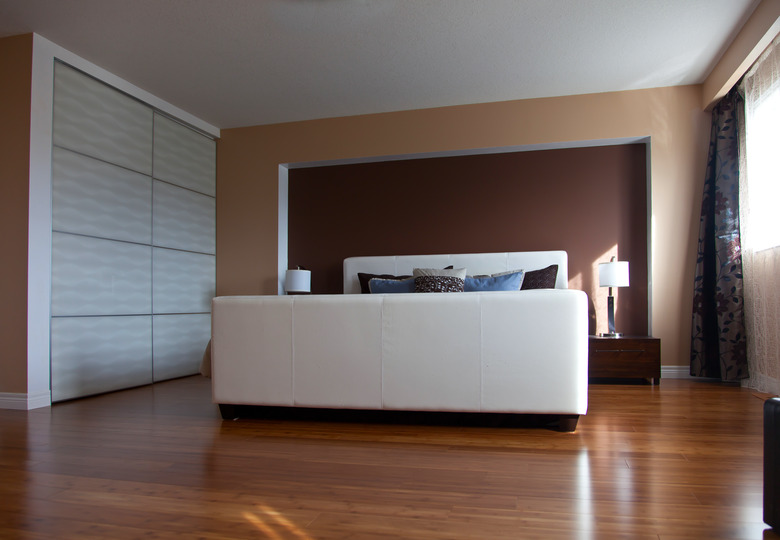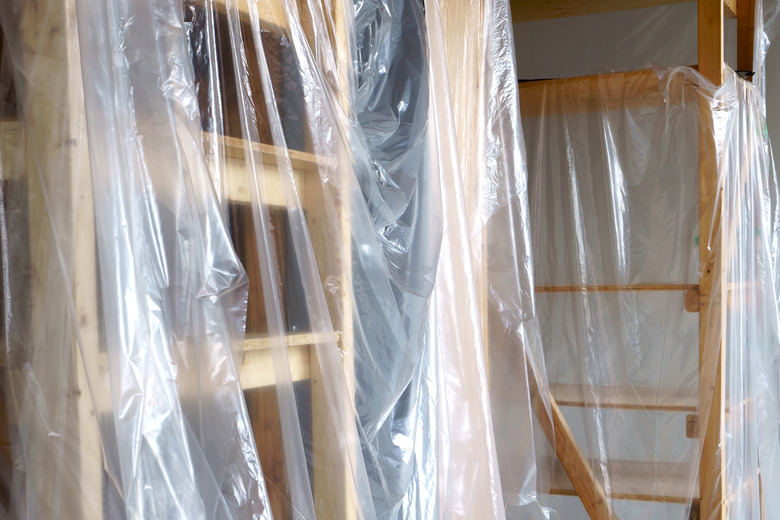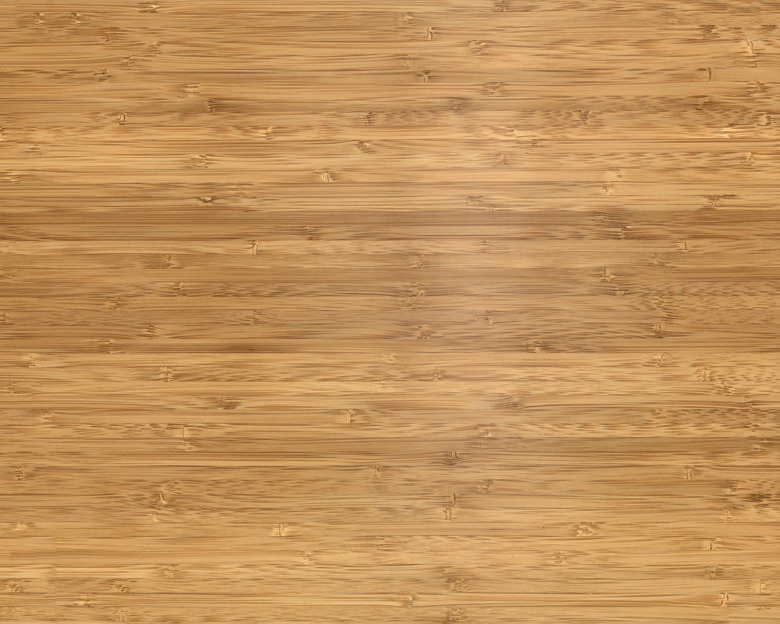Refinishing Bamboo Floors: A How-To Guide
Not everyone is in agreement that sanding and refinishing bamboo flooring is a good idea, even though most types of bamboo are as hard or harder than hardwood flooring. Conventional vertical and horizontal bamboo flooring is comparable in hardness to red oak, and strand bamboo is harder than ipé, the hardest commercially available hardwood, so there's little danger of wearing depressions or valleys into the flooring. The problem has to do with the nature of bamboo and the not-so-eco-friendly adhesives used in the manufacturing process.
Bamboo Flooring Truth warns that sanding some brands of flooring can raise fine splinters that remain after the floor has been refinished, and even worse, it can release volatile organic compounds (VOCs) from the toxic chemicals in the adhesive used to bind the bamboo fibers. Few bamboo flooring distributors raise these concerns, however, and most recommend using the same refinishing techniques you would use for hardwood floors.
The truth is that bamboo flooring hasn't been around long enough for installers to form a consensus about refinishing it, so you're taking a chance by approaching it as a DIY project. Your prospects of achieving great results are excellent, though, especially if your flooring is made of strand bamboo.
How to Refinish a Bamboo Floor
How to Refinish a Bamboo Floor
Things Needed
-
Plastic sheeting
-
Respirator
-
60-, 80- and 100-grit sandpaper
-
Polyurethane floor finish
-
Polyurethane sealer
-
120-grit sanding screen
-
Ruler
-
Flooring drum sander
-
Flooring edger
-
Vacuum
-
Tack cloth
-
Pad sander
-
Paint pad or floor-finish applicator
-
Floor buffer
1. Evaluate the Wear Layer
If you're about to sand engineered bamboo flooring, you must be certain that the top layer is thick enough to remain intact. Flooring that hasn't been refinished almost certainly has a thick-enough wear layer to sand, but if the floor has been sanded before, remove a door threshold so you can see a cross-section of the flooring. Measure the wear layer with a ruler and proceed only if it's more than 1/16-inch (2-millimeters) thick.
2. Protect Yourself and Your Family
Isolate the room in which you're working from the rest of the house by covering the doors and intake air vents with plastic sheeting and turning off the central air system until a day or two after the floor has been refinished. Open windows to provide ventilation and wear a respirator throughout the sanding process.
3. Cut the Surface with Coarse Sandpaper
Remove all the baseboards in the room and fit a flooring drum sander with 60-grit paper and sand at a slight angle to the bamboo grain. Lumber Liquidators recommends a 7- to 15-degree angle. By not going directly with the grain, you reduce the chances of raising splinters, and you knock down any edges of wide-plank flooring material that may have raised because of swelling. Use a flooring edger with the same paper grit to sand the edges. Vacuum the floor when you're done.
4. Make Two Finish Passes
Change the paper on the drum sander and edger to 80 grit for the second pass and to 100 grit for the third one. The purpose of these passes is to remove scratches and prepare the floor for finishing, so run the drum sander straight along the grain. Follow up each pass of the drum sander by sanding the floor's edges with the edger, using the same sandpaper grit as the drum sander (for that pass). Vacuum the floor after each pass.
5. Clean Up and Check for Splinters
Vacuum the floor thoroughly after the final pass and then wipe it down with a tack cloth. Check for splinters while you're wiping, and sand any splintered areas with a pad sander and 100-grit sandpaper. Let the floor dry thoroughly after tacking.
6. Apply a Sealer and Two Finish Coats
Most DIY floor-finish products are water-based polyurethane, and the sealer, which is intended to provide a smooth undercoat, is simply a high-solids version of the finish material. Apply a coat of sealer with a paint pad or, even better, use a floor-finish applicator, which is a weighted foam tube on the end of a long handle. Sand the sealer with a floor buffer and a 120-grit sanding screen and then apply two coats of finish in the same way, using the buffer to sand the first coat before applying the second.
You May Not Need to Refinish
You May Not Need to Refinish
If your bamboo floor has only sustained surface scratches or mild wear in high-traffic areas, you can restore the finish without sanding. The process, called a screen and recoat, involves scuffing up the old finish with a floor buffer and 120- and 150-grit sanding screens and applying one or two refresher coats of finish. Because this process doesn't expose the bamboo, it won't create splinters or release VOCs.


